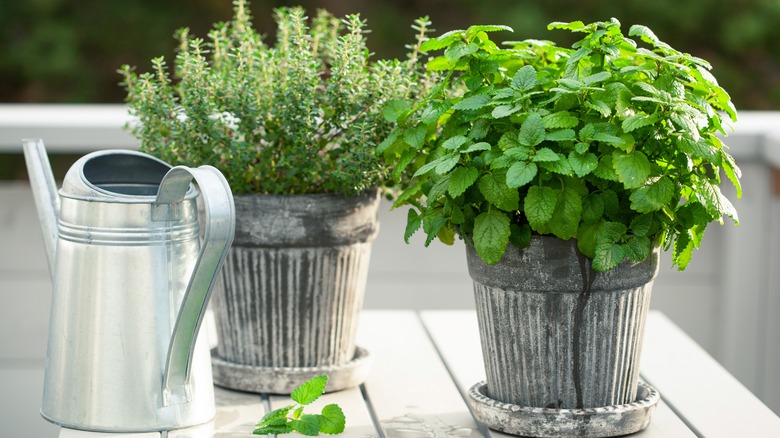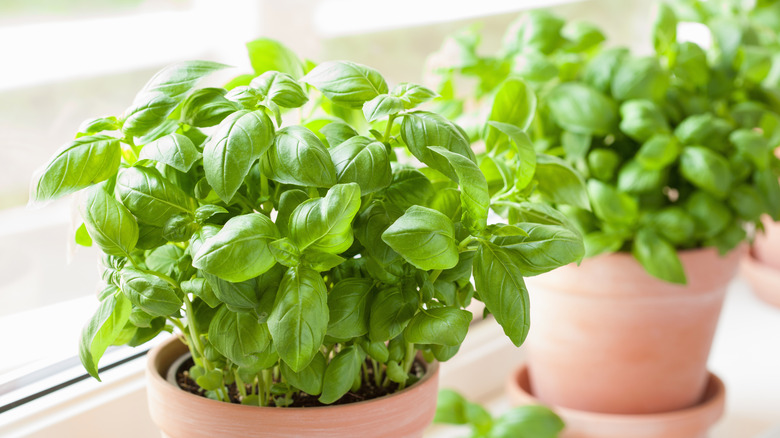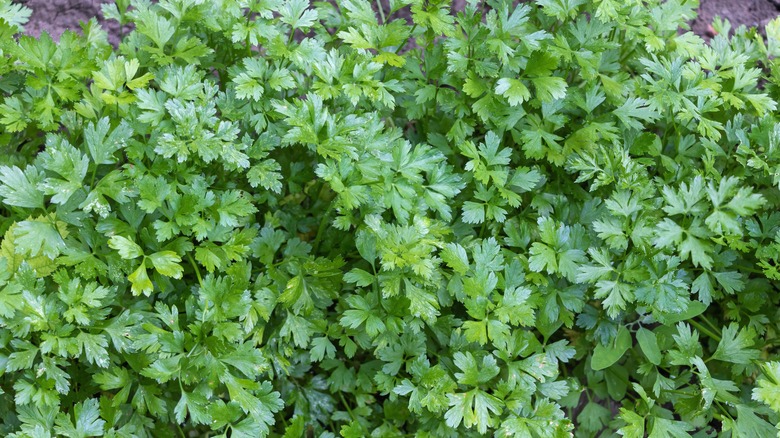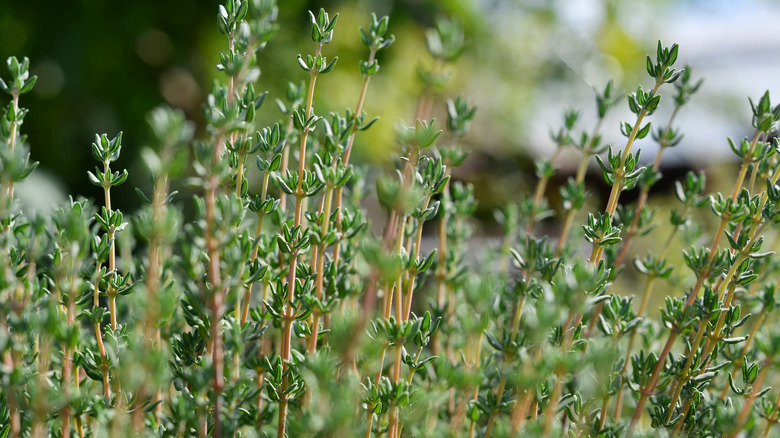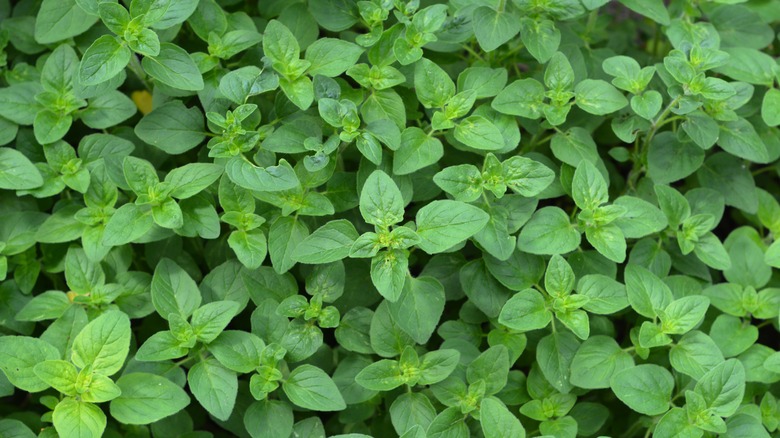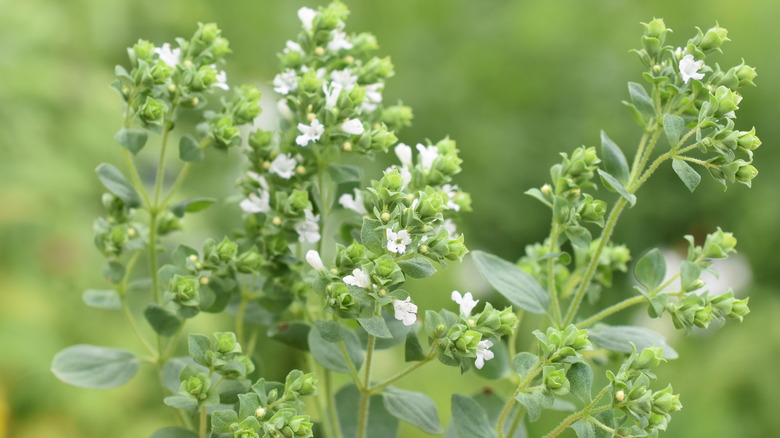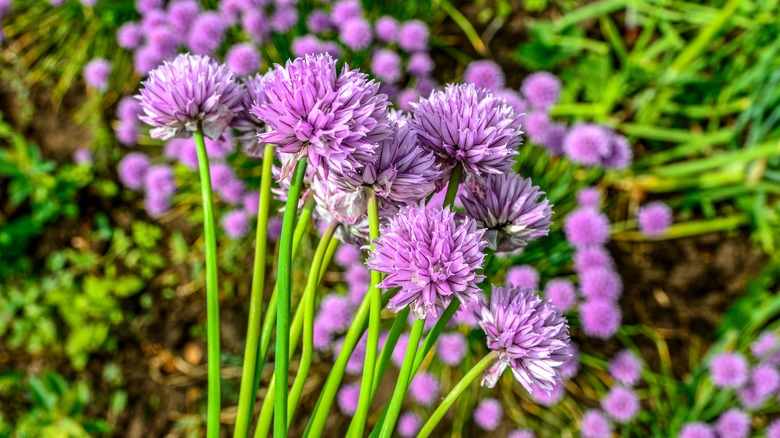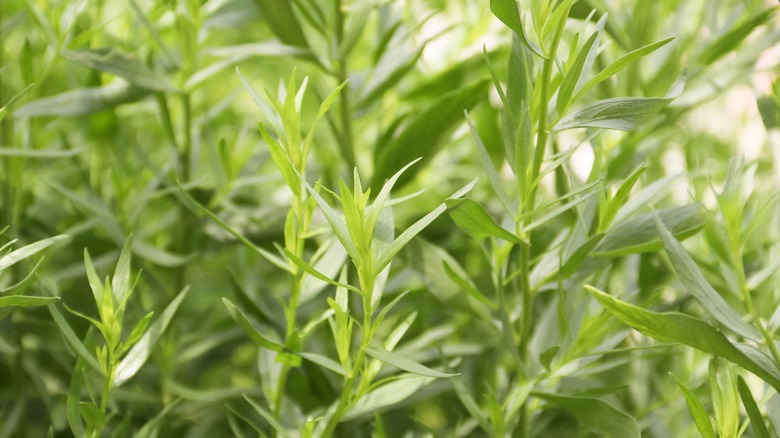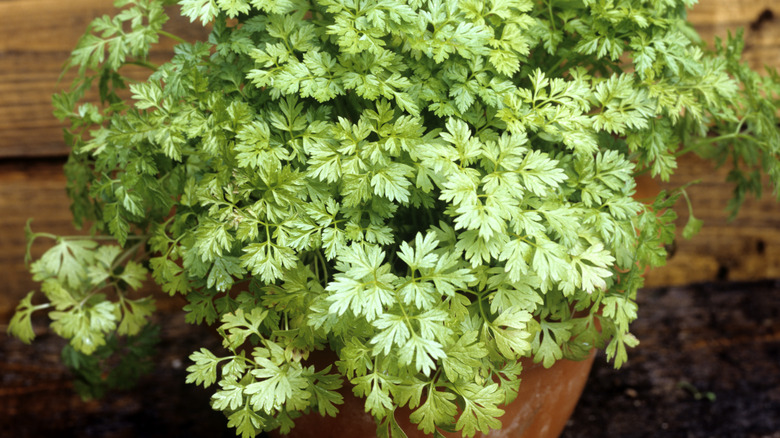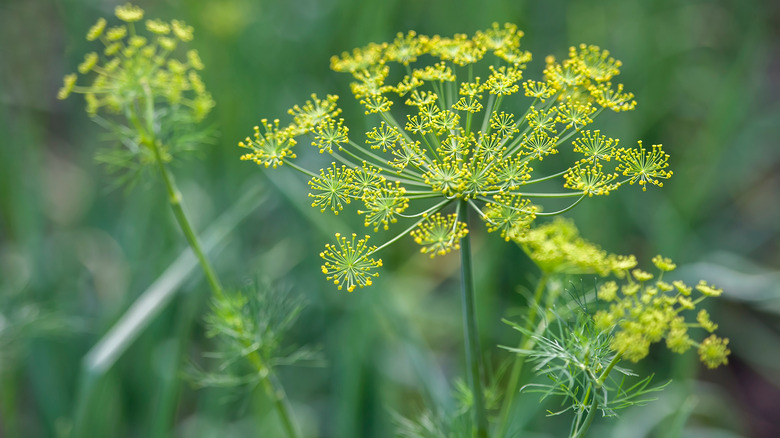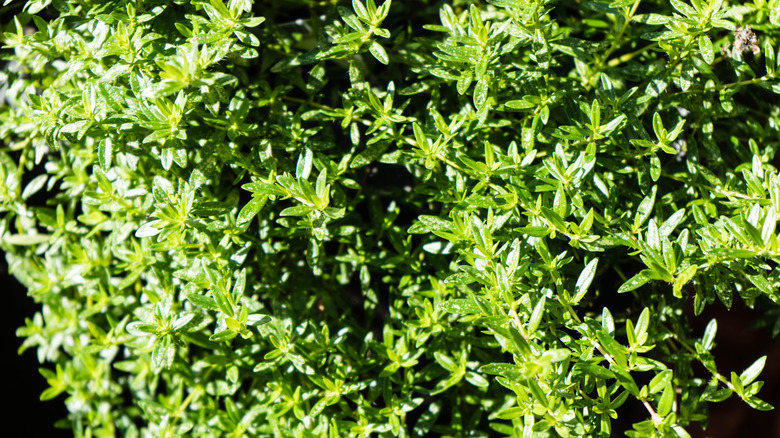10 Mediterranean Herbs You Can Grow In Containers, According To Our Professional Gardener
Growing culinary herbs in containers is easy, inexpensive, and uses very little soil. With a bit of sun, and using upcycled pots, all you really need to purchase is soil and seeds. Popular herbs like basil, oregano, parsley, and tarragon, central to Mediterranean cuisine, provide gorgeous color, fragrance, and flavor to all kinds of dishes. Growing Mediterranean herbs in containers is a convenient, low-cost way to have an assortment of them.
Most of these herbs like full sun, soil that is well-drained, sandy, and loamy, and consistent watering. You can use a good organic potting mix and stir in a spoonful of garden sand for each pot. Terra cotta pots not only look romantic and rustic, but provide good moisture retention, and are often available for cheap at yard sales. Herbs grow quickly from seed and can be re-sown at two-week intervals to keep fresh growth going all season. You can also use ceramic, plaster, or metal pots, or wooden boxes with drainage holes. If growing herbs indoors, place them near a sunny window.
Annual herbs grown from seed should be planted after the last hard frost date. Whether using seeds or plant starts, you can grow different herbs together in one container if you're using large pots or window boxes. An added bonus: Herbs contain volatile essential oils that give them pleasant fragrances, and also make them excellent natural insect repellents. Keeping the containers near seating areas provides a nice way to deter pesky flies or mosquitoes.
Basil
Basil has a sharp, musty, intoxicating fragrance and strong flavor that is associated in Italian folklore with virility and vitality. It is a staple in many world cuisines, and there are many varieties to grow from seed, including classic basils like Genovese and large leaf Italian basil, and basils with spicy or unusual flavors like Thai, purple, lime, and cinnamon. Basil likes full sun and ample water, and needs warm temperatures for the seeds to germinate. When the small flowers appear, snip them off so the plant gives it energy to the leaves.
Parsley
Parsley is an aromatic herb often used as a garnish, with a mild taste and a high vitamin and mineral content. It can be used raw in salads, or cooked in soups, pasta or sauces, and can be used to make delicious pesto. The most commonly grown parsleys are flat or curly-leaved varieties. Both grow easily and abundantly in full sun. We recommend trying Italian flat leaf, Gigante Catalogno, or Titan flat leaf parsleys, or forest green, extra-curled dwarf, and Pagoda curly parsley. Keep the soil around parsley moist but not wet.
Thyme
Thyme is a low-growing, gracefully spreading, very fragrant herb that comes in many varieties including lemon thyme, variegated thyme, caraway thyme, or creeping thyme. The most commonly grown is the heirloom English or French thyme (Thymus vulgaris), with tiny silvery-green leaves and pale purple flowers. Thyme stems are somewhat hard and inedible, so when harvesting for culinary use, snip only the leaves. Thyme has an earthy, somewhat astringent fragrance. It's easy to grow in well-draining soil; it is very drought-tolerant, and somewhat susceptible to root rot, so be sure not to overwater it. Many thymes are perennial and cold hardy.
Oregano
Oregano is a perennial herb (cold hardy to Zone 5) that increases in size each year and produces small white or pink flowers in late summer. These nectar-rich flowers attract pollinators. Oregano likes a well-drained sandy soil and plenty of sun. This herb is sharply fragrant with a peppery, earthy taste and plenty of nutrients. In Greek, the name means "joy of the mountain." Oregano looks great in a container as the short vines covered in tiny, fuzzy green leaves trail over the sides, but sometimes it will grow upright to 2 feet tall.
Marjoram
Marjoram, also known as "sweet marjoram" is closely related to oregano, but has a much milder flavor that is sweet and delicate. The small triangular green leaves also look similar to oregano, and its tiny pink flowers are also attractive to pollinators. This herb likes sunny weather and warm temperatures, and in cold regions can be brought indoors before hard frost to keep growing a bit longer in a sunny window. Keep the leaves trimmed by harvesting leaves regularly to stimulate growth during the growing season. Though marjoram is drought-tolerant, it thrives best with regular watering.
Chives
Chives are an easy-to-grow perennial herb closely related to onions and garlic. They can be planted from seed, or propagated by dividing large clumps that have formed tiny bulbs beneath the soil. Chives have a mild flavor that combines tastes of both garlic and onion, and they're a favorite herb for savory dips and sauces. Their attractive spiky purple flowers attract pollinators, while at the same time, the plant's pungent scent repels other insects. These cold-hardy perennials grow fine in containers with good drainage and with protection from freezing with mulch or fabric.
Tarragon
Tarragon has an unusual licorice-like herbal flavor and adds a wonderful aromatic character to many dishes. It is a sun-loving annual, and likes a sandy, well-draining, slightly acidic soil. Russian tarragon can be grown from seed. French tarragon bears sterile flowers and can't be grown from seed, but you can grow it from cuttings or buy a small plant to put in your own containers; it is very cold hardy and perennial to USDA Zone 4. Tarragon is also very drought-tolerant and doesn't like wet soil, so make sure your containers have good drainage.
Chervil
Chervil is sometimes referred to as "French parsley" and is one of the four herbs contained in the French mixture known as "fines herbes" (along with parsley, chives, and tarragon). Chervil tastes faintly of licorice, similar to tarragon, but with a more delicate flavor. The lacy light green leaves look like a cross between parsley and tiny ferns, and make a very attractive addition to the herb garden. Chervil likes moist but well-drained soil, and is partial to full sun. The seeds can be hard to find, but are available from several online vendors that specialize in heirloom seeds.
Dill
Dill has a unique scent and flavor that is light yet pungent. It's commonly used to flavor pickles, and is delicious on potatoes and eggs. The delicate, lacy green leaves are topped with a delicate flower full of tiny seeds, often used in floral arrangements. Though it's an annual, it reseeds freely in the garden. One spring, I had literally dozens of tiny dill seedlings in my garden. Growing dill in containers and trimming the seed heads before they dry helps prevent them from spreading too much. Dill likes a rich, slightly acidic soil and full sun.
Savory
Savory, also known as summer savory, is an annual herb with a somewhat sweet, delicate flavor. Its perennial version, winter savory, is slightly bitter and summer savory is often preferred for its milder taste. Savory is one of the main herbs used to make the famous French seasoning known as herbes de Provence. This herb grows easily from seed and its upright stems, covered in small spiky leaves, can grow up to 2 feet tall. Plant the seeds in loose, loamy, well-drained soil in a container after the last hard frost, and give them plenty of sun.
